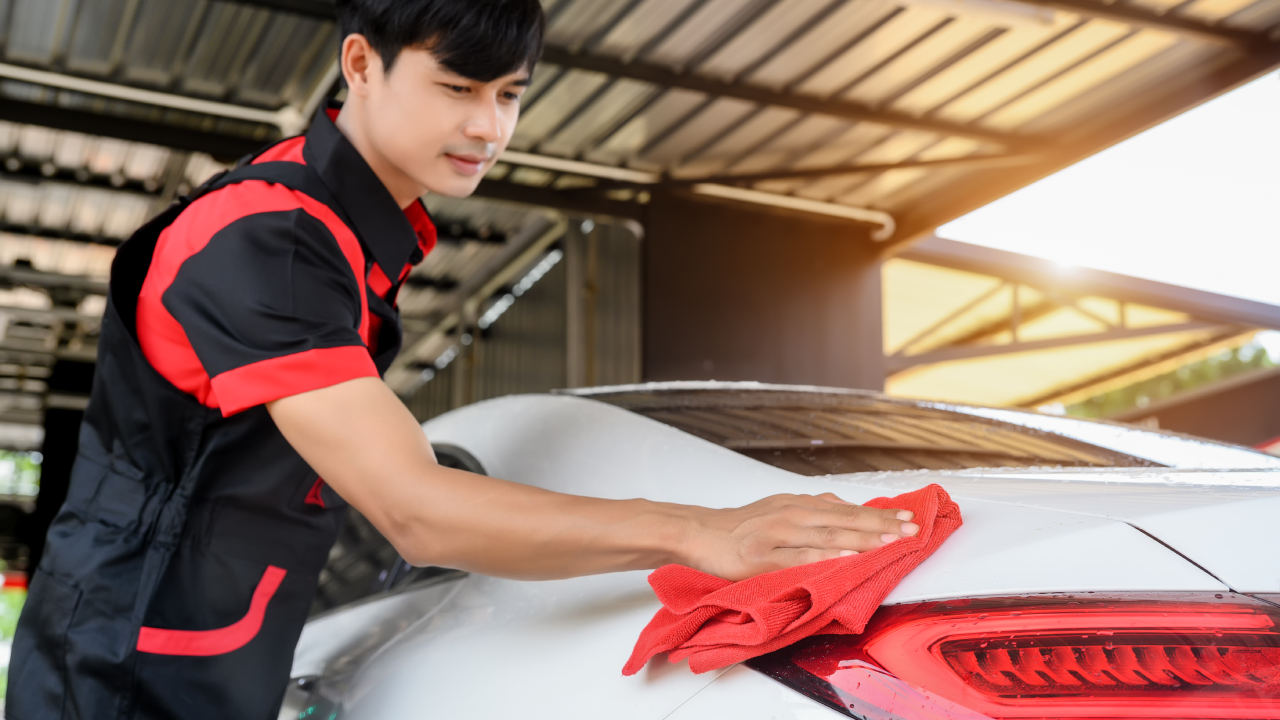Performing maintenance is a task that often goes hand-in-hand with owning a vehicle. But what about vehicles you only use once in a while or store part of the year? It may seem like a car that isn't used frequently wouldn't require upkeep like your everyday vehicle — but that isn't always the case. If you'll be storing your vehicle for a month or more, you may want to follow these car maintenance tips:
If you have a vehicle you store at your vacation home or a spare car you only drive every so often, there are some steps you should take before leaving it for an extended period of time.

- An essential checklist for regular car maintenance, highlighting crucial aspects to keep your car in top condition. Source: allstate.com
Start by cleaning your vehicle from top to bottom, including washing (make sure you get hard-to-remove dirt and debris, like sap), polishing and waxing the outside, according to Cars.com. Consider spraying any unpainted metal with undercoating to help protect against rust, explains Cars.com.

- Practical tips on car maintenance to avoid major repairs, perfect for preparing your car for storage. Source: Ramsey Solutions - ramseysolutions.com
When your vehicle is sparkling clean again, it's important to fill up your gas tank if you will be storing the car longer than 30 days, says Edmunds, as this may help prevent moisture from building up in the tank. Cars.com also recommends adding a fuel stabilizer to the tank when it's almost full, as the shelf life of standard fuels is only about three months. If your vehicle won't be used for a few months, Cars.com says the stabilizer may help keep the fuel lines and engine from corroding.

- Smart car care tips to maximize the lifespan of your ride, ideal for maintaining your car in storage. Source: Allison Martin - bankrate.com
If your car will be sitting for a long period of time, the temperature may change and the tires can slowly lose pressure, says Cars.com. For this reason, it's a good idea to inflate your tires to the recommended air pressure, but do not exceed the maximum. You'll want to repeat this process when you take the vehicle out of storage.

- Visual guide to getting your car out of storage and ready for the road again. Source: allstate.com
Finally, before you leave your car dormant for an extended period of time, top off your vehicle's fluids — such as brake fluid, engine coolant, power steering fluid (if applicable), transmission fluid, antifreeze and windshield wiper fluid, suggests Cars.com. Also, consider changing the oil before you let your vehicle sit in storage for more than a couple of weeks, says Edmunds. It’s recommended to take the car for a short drive, as this will help circulate the fluids, including the fuel stabilizer.
Get a quality cover that securely fits your vehicle, keeps out moisture and allows for air flow, suggests Cars.com. This will help protect the exterior from bumps, scratches and dirt. It also may be a good idea to put steel wool in the air cleaner intake and exhaust pipe to keep small animals from using your vehicle as shelter, says Edmunds.
Don't forget the vehicle's power source: the battery. A battery will eventually lose its charge if it isn't driven at least every few weeks, explains Edmunds. If you prepare the car properly for storage, though, you do not need to run it to keep the battery charged. Cars.com suggests connecting the battery to a trickle charger or battery tender with an automatic shut-off feature or float mode. This will ensure the battery doesn't get overcharged. The battery can remain in the vehicle or be removed while it's hooked up to the battery tender.
Once you're ready to use the vehicle again, remember to undo all of the storage prep you did originally (specifically, the prep involving the battery, steel wool, etc.). It can be helpful to use a simple checklist while you're prepping the vehicle for storage, so you can refer to that list when you're ready to take it back out onto the road. Edmunds recommends you do the following to prepare your car for use again:
Even though you may not use your spare car every day, you probably want to make sure it runs reliably when you do need it. If you follow these steps, you may get more out of your vehicle.
